Patents
A New Method for getting Gold from Wheat
In 1884, Harry Fell of South Norwood Park was granted Patent No. 14,204 by the British Patent Office for a "New Method for getting Gold from Wheat". This begs the question, what was the old method of getting gold from wheat?I haven't been able to find a copy of the patent, since 19th-century British patents (unlike American ones) aren't readily available online. However, the March 5, 1997 issue of Science offered a full transcript of Fell's patent, "including the peculiar use of punctuation marks".
The April 24, 1885 issue of The Photographic News offered an easier-to-understand summary of Fell's method:
Of course, what Fell had failed to mention was that the wheat would first have to be grown in soil containing a lot of gold. Then, yes, I think it would be possible to get gold from wheat using his method. Though it would probably be easier to get it by directly filtering the gold out of the dirt.
Posted By: Alex - Mon Mar 21, 2022 -
Comments (1)
Category: Patents, Nineteenth Century
A Device for Intercepting the Moisture running down the Hands and Wrists when Eating Crayfish
In 1933, the British patent office awarded Edgar Honig of Germany Patent No. 393,673 for this invention. From his patent:When eating crustacea of this nature, it is found very unpleasant that the liquid emerging therefrom tends to run down the wrists and into the sleeves, this liquid resulting in stains, which it is extremely difficult or impossible to remove.
According to the invention, this drawback is overcome by means of a ring which tightly encircles the wrist and consists of an absorbent material. As a material of this description it is convenient to employ rubber sponge. It is, however, also possible to use paper, fabric or similar materials, which intercept the moisture running over the wrists and absord the same.
I'm not a fan of shellfish, so I wasn't aware how messy crayfish (aka crawfish) could be. But evidently their messiness really bothered Honig.


Below: how to eat crawfish.
Posted By: Alex - Thu Mar 10, 2022 -
Comments (3)
Category: Food, Patents, 1930s
Patented by an insane person
Many patents might seem like they've been invented by an insane person. But as far as I know U.S. Patent No. 711,566 is the only patent that actually describes the inventor (Clark D. Hazard) as "an insane person".The invention itself is unremarkable. It's for a "heating furnace". Evidently Mr. Hazard must have been institutionalized, or otherwise incapable of filing for the patent without assistance. So given this, it's impressive he was able to invent the furnace. But his description still stands out as a curiosity of the patent office.


Posted By: Alex - Fri Feb 25, 2022 -
Comments (3)
Category: Patents, 1900s
Nuclear Tunneling
One of the projects that researchers at Los Alamos have worked on is a 'subterrene'. This is a nuclear-powered tunneling machine capable of boring through solid rock at high speed by melting the rock. They were granted a patent (No. 3,693,731) for this in 1972.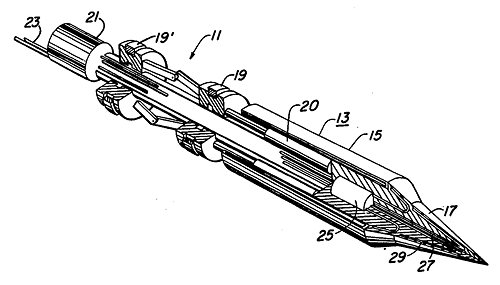

There's some info about this (as well as it's possible use on the Moon or Mars) in the book Terraforming Mars:
The same technology was proposed by Joseph Neudecker and co-workers, in 1986, as a means by which tunnels might be bored upon the Moon in order to construct a subsurface transportation system. Describing their nuclear-powered melting machine as a SUBSELENE, Neudecker et al. calculate that a fission-reactor-heated, 5-m diameter tunneler could be made to advance by as much as a 50-m per day through the lunar subsurface. This tunneling, they argued could (indeed, must) be operated remotely. Importantly, for tunnel coherence and stability, the material melted at the front of the SUBSELENE would be extruded at its backend to form a glass lining on the tunnel wall.
Wikipedia has an article about the Subterrene, noting the rumor that the Soviets actually built such a device which they called the "battle mole".
Posted By: Alex - Sat Feb 19, 2022 -
Comments (1)
Category: Caves, Caverns, Tunnels and Other Subterranean Venues, Patents, Atomic Power and Other Nuclear Matters, 1970s
Wong Tai Tung’s Metal Brassiere
In 1968, the British Patent Office granted Wong Tai Tung of Hong Kong Patent No. 1,105,147 for "Improvements in or relating to Brassiere Garments". From his patent:It is the most important point for women to have decorated brassiere garments to enhance the beauty of the bosom.
In order to meet with their requirement, I have invented a decorative metal brassiere garment. It makes the bosom appear bigger because of the twingle and sparking light of ornaments of gems and pearls on the garment.
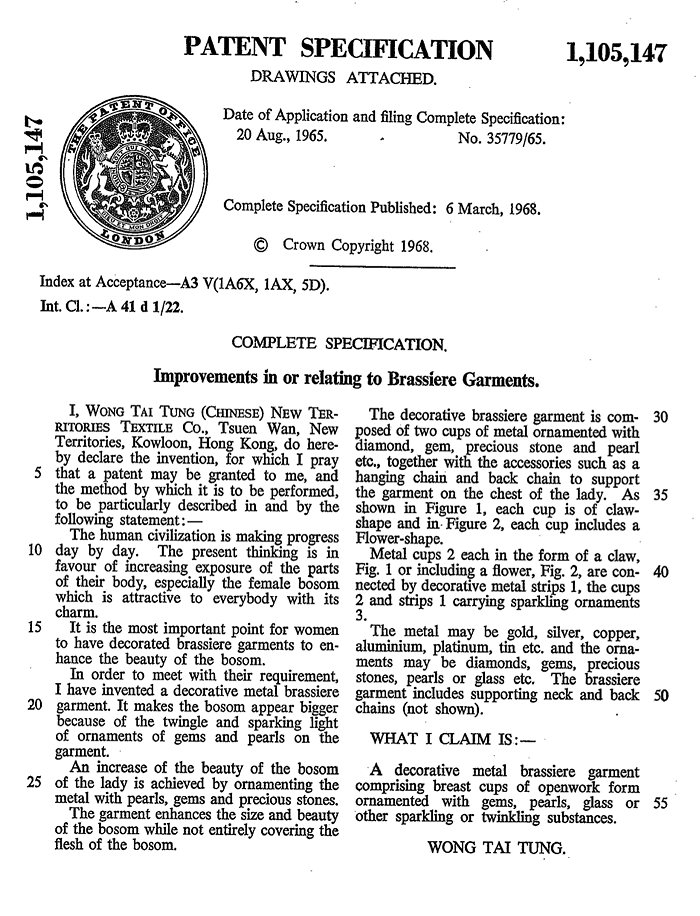
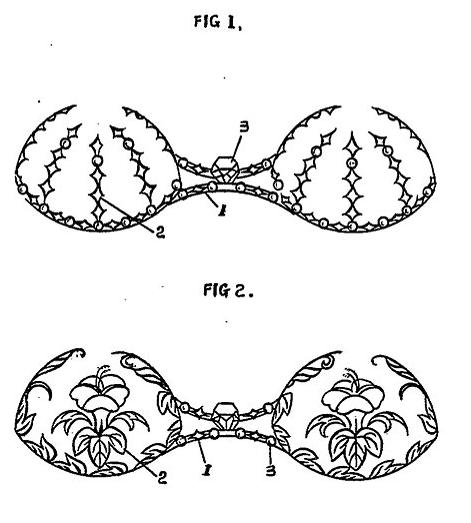
Posted By: Alex - Mon Feb 14, 2022 -
Comments (6)
Category: Fashion, Underwear, Patents, 1960s
Frances Gabe’s Self-Cleaning House
Frances Gabe had a vision of putting an end to housework. No more dusting or vacuuming. All a homeowner would have to do would be to push a button and the house would clean itself, as if the entire structure was a giant dishwasher.Of course, this meant that everything in the house had to be waterproofed. But it also meant that the actual dishwasher and clothes washer became redundant. Just hang dirty clothes in the closet and stack dishes in a cabinet — they'd get washed along with the rest of the house.
Gabe offered two stories for how she came up with the concept of the self-cleaning house. The first was that, as a newly married young woman, she once noticed a jam stain on the wall. Instead of scrubbing it off she decided to get a hose and sprayed it off.
The second story involved divine inspiration. After divorcing her husband she said that she was sitting, feeling despondent, and praying to God to provide her with some purpose to keep her going. Suddenly two angels appeared on her shoulders. And then, she said, "I picked up a pencil and began scribbling. I thought I was just doodling. Then I stopped and looked, and there was the self-cleaning house."
She received a patent (No. 4,428,085) for the self-cleaning house in 1984. She also transformed her own house in Newberg, Oregon into a prototype. From what I can gather, she never managed to make the entire house self-cleaning, but the kitchen could clean itself.
When she was alive she would offer tours of the house, but she died in 2016, and the new owners of the house haven't maintained its self-cleaning features.
Incidentally, Gabe was an invented name, so it's not what appears on her patent. Her full name, when married, was Frances Grace Arnholtz Bateson. She constructed 'Gabe' out of her initials.
More info: mit.edu, wikipedia
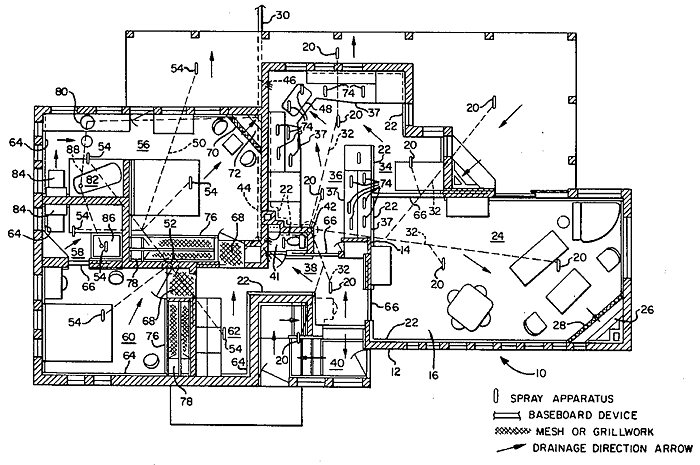
Posted By: Alex - Wed Feb 09, 2022 -
Comments (6)
Category: Architecture, Inventions, Patents, Baths, Showers and Other Cleansing Methods
The Golden Age of Patents
Alex is a master at finding oddball inventions that received a patent. Surely one of his spiritual ancestors must have been Wallace Peck, who did a humorous book that imagined such inventions.You can read the whole text here.
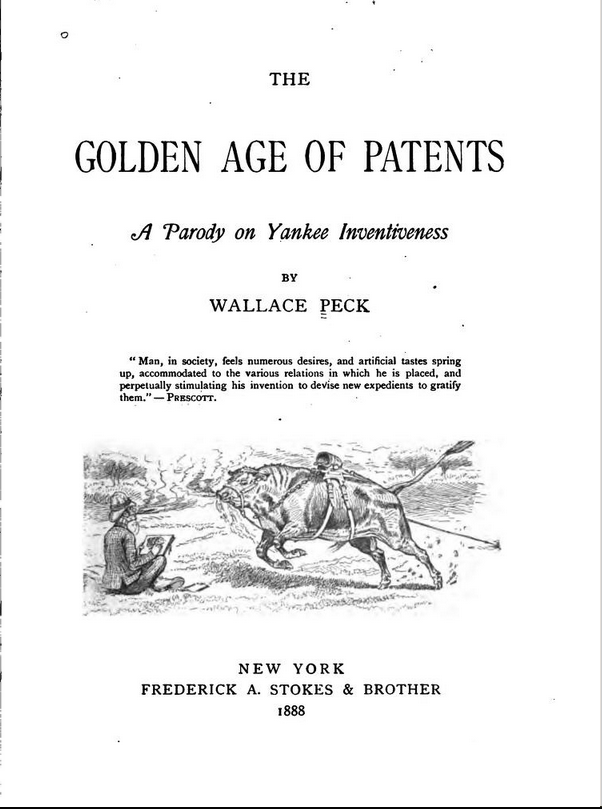
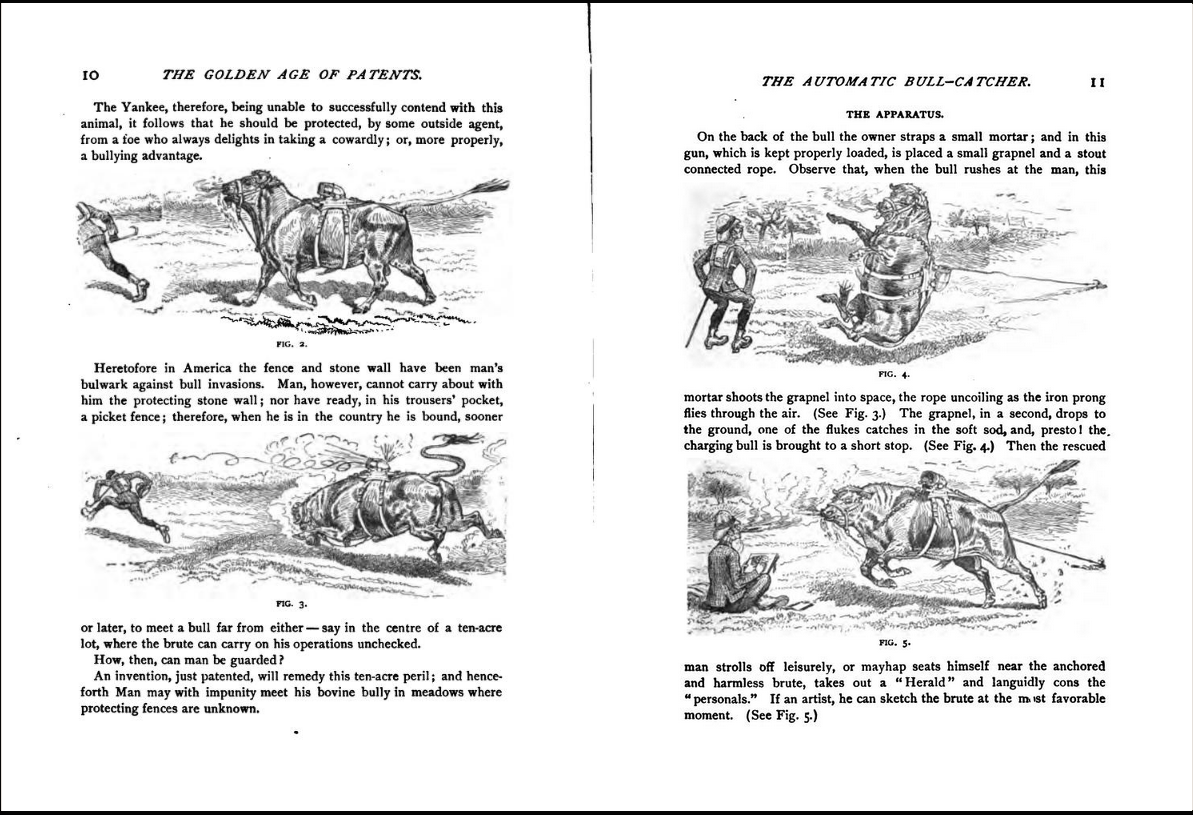
Posted By: Paul - Sun Jan 30, 2022 -
Comments (0)
Category: Humor, Inventions, Patents, Books, Nineteenth Century
Toothache-Killer Cigarettes

Los Angeles Times - Aug 12, 1991
A search of the patent records turned up a 1994 Chinese patent (CN1106283A) for these 'toothache-killer cigarettes':
I wonder what happens if you smoke them when you don't have a toothache. Would your mouth go numb?
Posted By: Alex - Wed Jan 26, 2022 -
Comments (3)
Category: Patents, Smoking and Tobacco, Teeth
Muir’s Improved Pub
In 1865, temperance advocate William Muir obtained a British patent (No. 1 for 1865) for what he called "Improvements in the construction of public houses." Although whether they were actually improvements depended, I suppose, on one's point of view.Muir wanted to improve pubs first by constructing their front walls out of plate glass in order to make the interior visible to people passing by. This, he believed, would "to a great extent check drunkenness and the indecent behaviour of the persons obtaining refreshment."
Second, he wanted to make the entrances only two feet wide in order "to prevent, as far as possible, the entrance of females with extensive steel crinolines." Why prevent women wearing crinolines? He didn't elaborate. Was this some kind of code for keeping prostitutes out of the pubs?
I don't think many publicans rushed to adopt his improvements.
More info about William Muir
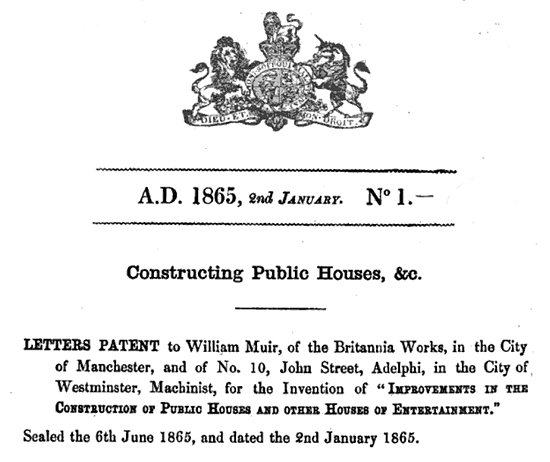
Posted By: Alex - Fri Jan 21, 2022 -
Comments (4)
Category: Inebriation and Intoxicants, Patents, Nineteenth Century
The Microsoft Hinged Box
Microsoft received its first patent in 1986 (Patent No. 4,588,074). By this time it was already a huge company, having released Microsoft Windows the previous year. But its first patent wasn't for anything related to computers or software. Instead, it was for a kind of hinged box designed to store and support books and articles.It then didn't receive any more patents for another two years.
I'm curious about the backstory of this hinged box. What inspired its invention? Did Microsoft ever attempt to manufacture or sell it? And why did the company feel compelled to patent it?
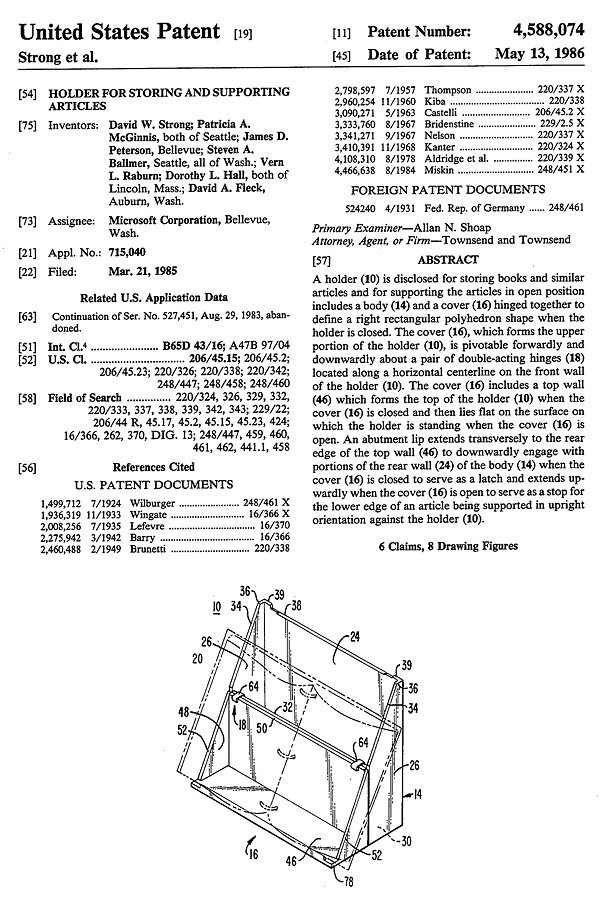
Posted By: Alex - Thu Jan 06, 2022 -
Comments (2)
Category: Inventions, Patents, Technology, 1980s

| Who We Are |
|---|
| Alex Boese Alex is the creator and curator of the Museum of Hoaxes. He's also the author of various weird, non-fiction, science-themed books such as Elephants on Acid and Psychedelic Apes. Paul Di Filippo Paul has been paid to put weird ideas into fictional form for over thirty years, in his career as a noted science fiction writer. He has recently begun blogging on many curious topics with three fellow writers at The Inferior 4+1. Contact Us |




